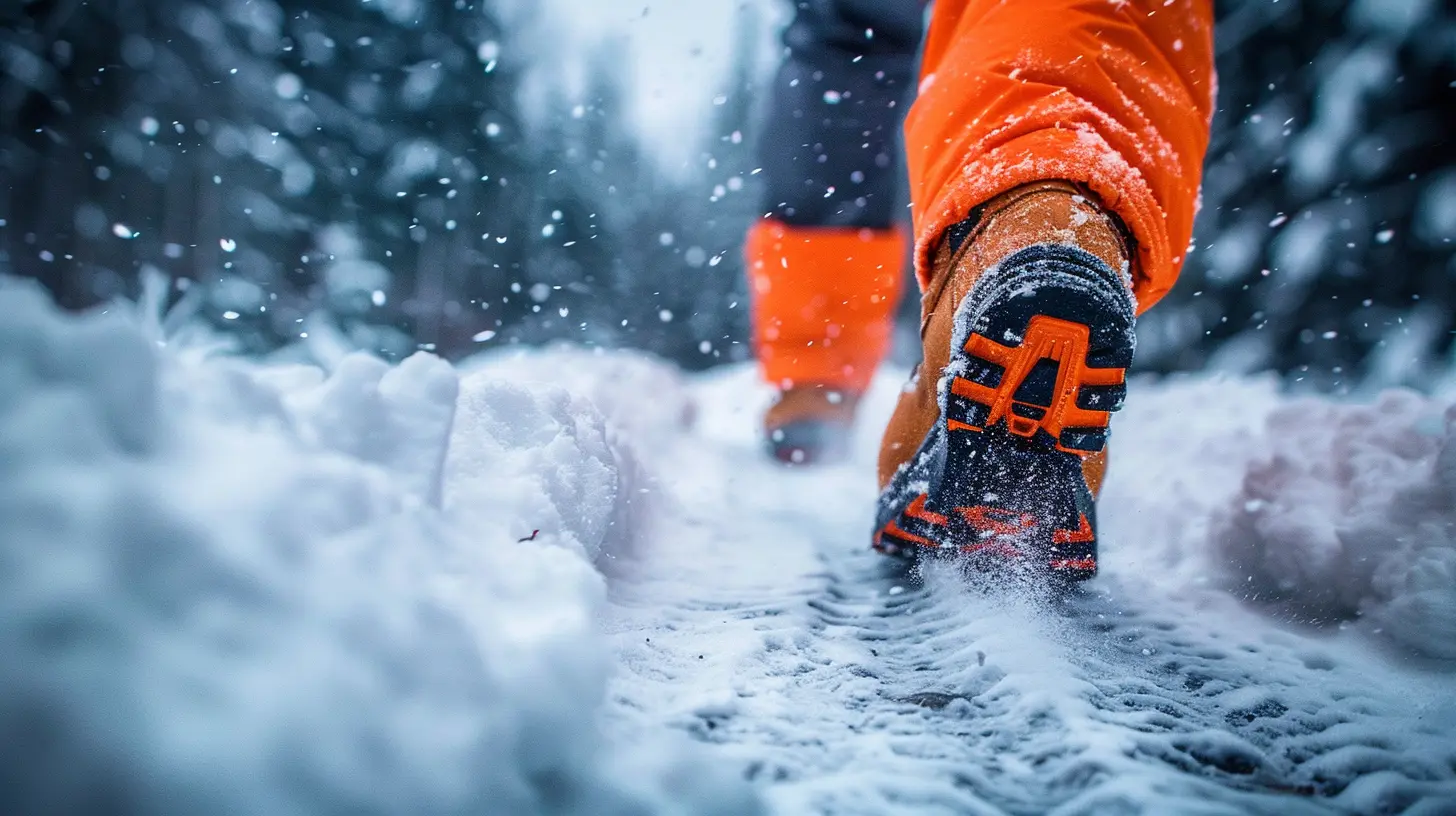15 January 2025
Training under extreme conditions can push your body to new heights, but it also comes with serious risks. Whether you're running in scorching heat, lifting weights in freezing temperatures, or hiking up a mountain through a storm, the environment can throw more challenges at you than just the physical demands of your workout. Injuries are common, and if you're not careful, that intense training session can turn into a painful setback.
So, how can you push your limits while staying safe? Let’s dive into the best practices for preventing injuries when training in extreme conditions.

Understand The Risks
First things first, you need to understand what you're up against. Extreme conditions can vary, and so do the risks associated with them. You wouldn’t train the same way in 100°F heat as you would in sub-zero temperatures. Each environment presents unique challenges to your body, and you need to adjust your approach accordingly.Heat-Related Risks
Training in high temperatures can lead to dehydration, heat exhaustion, and even heatstroke. Your body loses fluids rapidly through sweat, and if you're not replenishing them, your performance will decline, and injury risks will skyrocket. Overheating can also lead to muscle cramps, dizziness, and fainting—none of which are conducive to a good workout (or safety, for that matter).Cold-Related Risks
On the other hand, frigid conditions pose their own threats. Cold weather restricts blood flow, which makes your muscles stiffer and more prone to injury. You’re more likely to pull or strain a muscle when your body is cold, and frostbite or hypothermia can become a real danger if you're not properly dressed.Altitude & Terrain Challenges
Extreme conditions aren’t just about temperature. Training at high altitudes or on rugged terrains introduces new variables. At high altitudes, the reduced oxygen levels can take a toll on your endurance, and unfamiliar or difficult terrains can lead to sprained ankles, twisted knees, or falls.The key takeaway? You need to respect the environment you're training in because the conditions aren’t just a backdrop—they're an active part of the challenge.

Hydration Is Non-Negotiable
No matter what extreme condition you're training in, hydration is your best friend.Why Hydration Matters
Your body is made up of about 60% water, and it needs that hydration to function properly. When you're sweating buckets in the heat, or even when you’re working out in the cold, you’re losing fluids. Dehydration doesn’t just lead to fatigue—it makes you more injury-prone. Without enough water, your muscles are less elastic, your joints are less lubricated, and your body’s ability to regulate its temperature is compromised.How to Hydrate
Don’t wait until you're thirsty to drink water. By the time you feel thirsty, you're already dehydrated. Instead, sip water throughout your workout and make hydration part of your pre-and post-workout routine. For longer sessions or workouts in extreme heat, consider electrolyte drinks to replace the salts and minerals you're losing through sweat.Pro Tip: Keep an eye on the color of your urine. If it’s dark yellow, that’s a sign you need more water. Aim for a light, straw-like color to know you're well-hydrated.

Warm-Up And Cool Down - Yes, Even In Extreme Conditions
Warming up and cooling down are essential parts of any workout, but they become even more critical in extreme conditions. Skipping these steps in the cold or heat is like trying to run a marathon without lacing up your shoes—you're setting yourself up for failure.Warm-Up In The Cold
In colder conditions, your muscles are tighter and less flexible. A proper warm-up will gradually increase your body temperature and get your blood flowing to your muscles, making them more pliable and less prone to injury. A good warm-up should last at least 10-15 minutes and involve dynamic stretches like leg swings, arm circles, and light jogging.Warm-Up In The Heat
In hotter conditions, your body may already feel warm, but that doesn’t mean you're ready to jump into high-intensity training. A warm-up increases your heart rate and prepares your muscles for the demands you're about to place on them. Start with low-intensity movements and gradually ramp up so your body transitions smoothly into your main workout.Cool Down Is Equally Important
After your workout, cooling down is just as important to help your heart rate return to normal and to reduce muscle stiffness. In cold weather, the cooldown can prevent sudden muscle tightness as your body temperature drops. In hot weather, it helps bring down your core temperature gradually, avoiding dizziness or fainting.
Dress For Success
What you wear during your training can make or break your workout, especially in extreme conditions.Cold Weather Gear
In cold weather, layering is key. But don’t just throw on any old sweater—your clothing should be moisture-wicking to keep sweat away from your skin. Start with a base layer that wicks away moisture, add an insulating layer to keep you warm, and top it off with a windproof or waterproof jacket if the conditions call for it.Also, make sure you cover exposed skin. Your head, hands, and feet lose heat the quickest, so hats, gloves, and thermal socks are a must.
Hot Weather Gear
In the heat, opt for lightweight, breathable fabrics that allow sweat to evaporate and keep you cool. Look for moisture-wicking materials here as well, but focus on lighter colors that reflect the sun’s heat rather than absorbing it. And don’t forget sunscreen—sunburns can lead to dehydration and increase your risk of overheating.Pro Tip: Avoid cotton in extreme conditions. Cotton holds onto moisture and will leave you feeling wet and uncomfortable, which can lead to chafing or worse, hypothermia in cold weather.
Be Mindful Of Your Body’s Signals
Your body is constantly talking to you, and in extreme conditions, you need to listen more closely.Know The Early Signs of Trouble
In the heat, watch out for signs of heat exhaustion: dizziness, headaches, nausea, and an elevated heart rate. If you feel any of these symptoms, stop your workout immediately, find shade, and rehydrate.In cold conditions, be mindful of numbness or tingling in your fingers, toes, or face—these can be early signs of frostbite. If you start shivering uncontrollably or feel disoriented, you may be experiencing hypothermia, and it's time to get somewhere warm fast.
The bottom line? Don’t try to tough it out. Your body knows when something is wrong, and it’s better to cut a workout short than risk a serious injury or illness.
Don’t Skip Rest Days
Yes, it's tempting to keep pushing, especially when you're training for a specific goal, but overtraining can lead to injuries, especially when you're already dealing with extreme environmental factors. Rest days are your body's time to recover, repair muscle tissue, and adapt to the stress you've put it through.Importance of Recovery
Skipping rest days doesn’t just wear you down physically—it also affects your mental focus. And when you're training in extreme conditions, mental sharpness is crucial. Fatigue can lead to poor decision-making, which is a fast track to injury.Make sure you get enough sleep, eat a well-balanced diet, and take time to stretch or do low-intensity activities like walking or yoga on your rest days.
Adjust Your Expectations
One of the most important things to remember when training in extreme conditions is that you might not be able to perform at your peak—and that’s okay. Extreme heat, cold, or altitude can significantly impact your endurance, strength, and speed. Adjust your goals and be realistic about what your body can handle in these environments.Focus on Effort, Not Outcome
Instead of focusing on hitting a specific time or lifting a certain weight, focus on the effort you're putting in. If you're giving it your all in extreme conditions, that's a win in itself. You don’t need to set a personal best every time you train—sometimes staying injury-free and consistent is the best outcome.Conclusion
Training in extreme conditions can be incredibly rewarding, but it also comes with challenges that can lead to injury if you're not careful. By understanding the risks, staying hydrated, wearing the right gear, warming up and cooling down, listening to your body, and giving yourself adequate time to rest, you can push your limits safely.Remember, it's not just about training harder—it's about training smarter. Respect the environment you're in, and you'll set yourself up for long-term success without the setbacks of injury.













Kingston McKellar
Great insights on injury prevention in extreme training! Emphasizing preparation and hydration is essential for athlete safety and performance.
April 4, 2025 at 8:07 PM